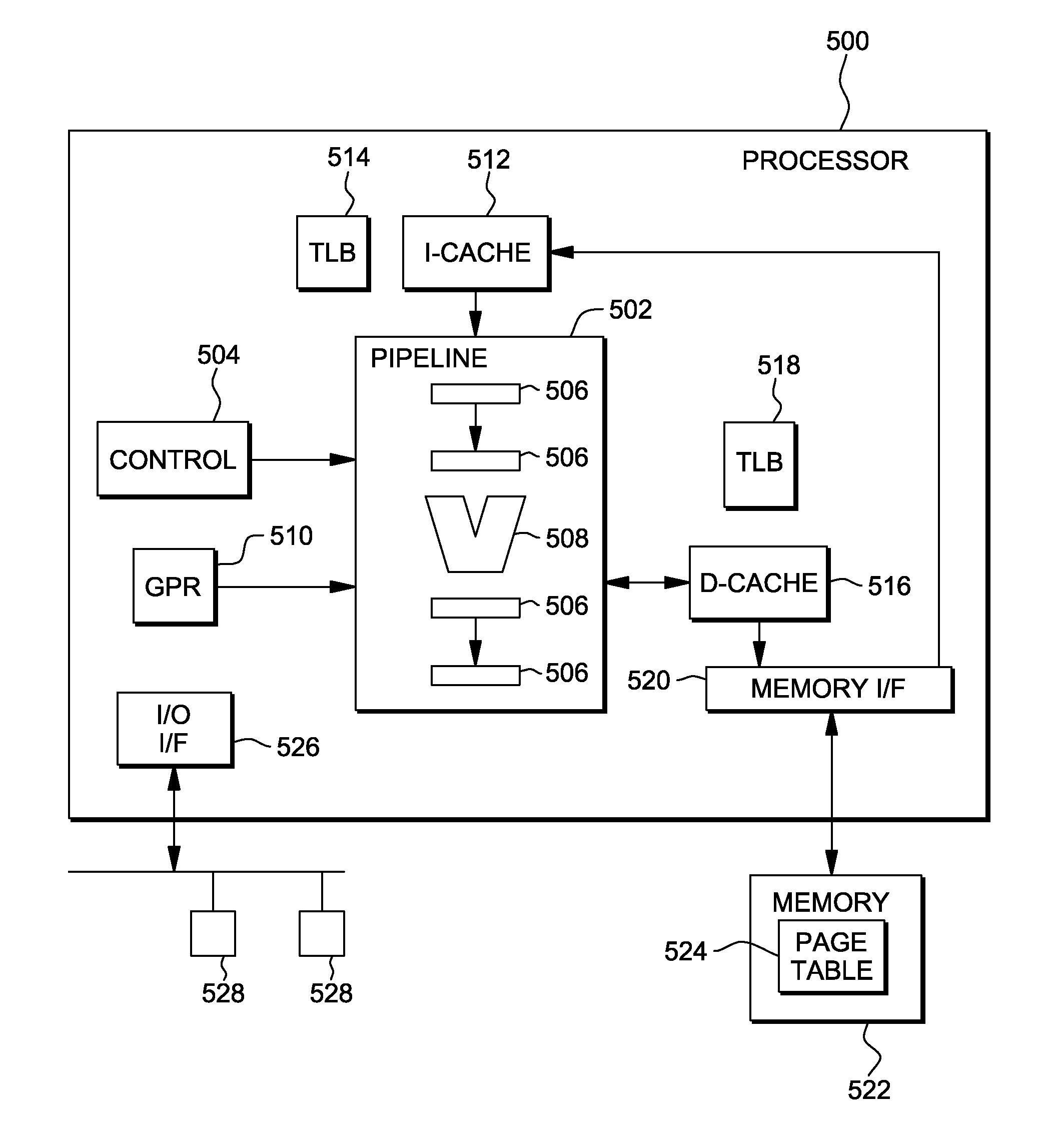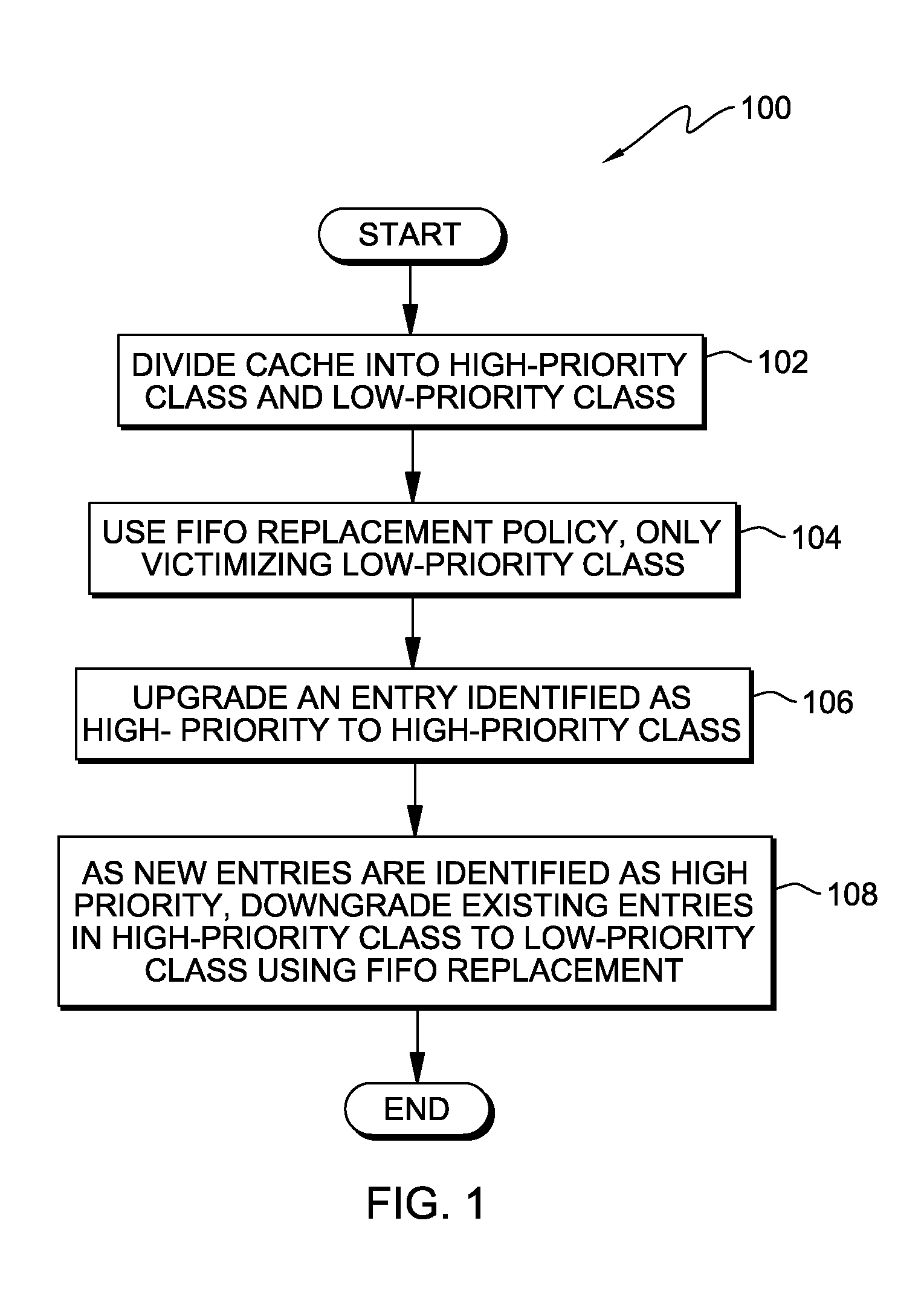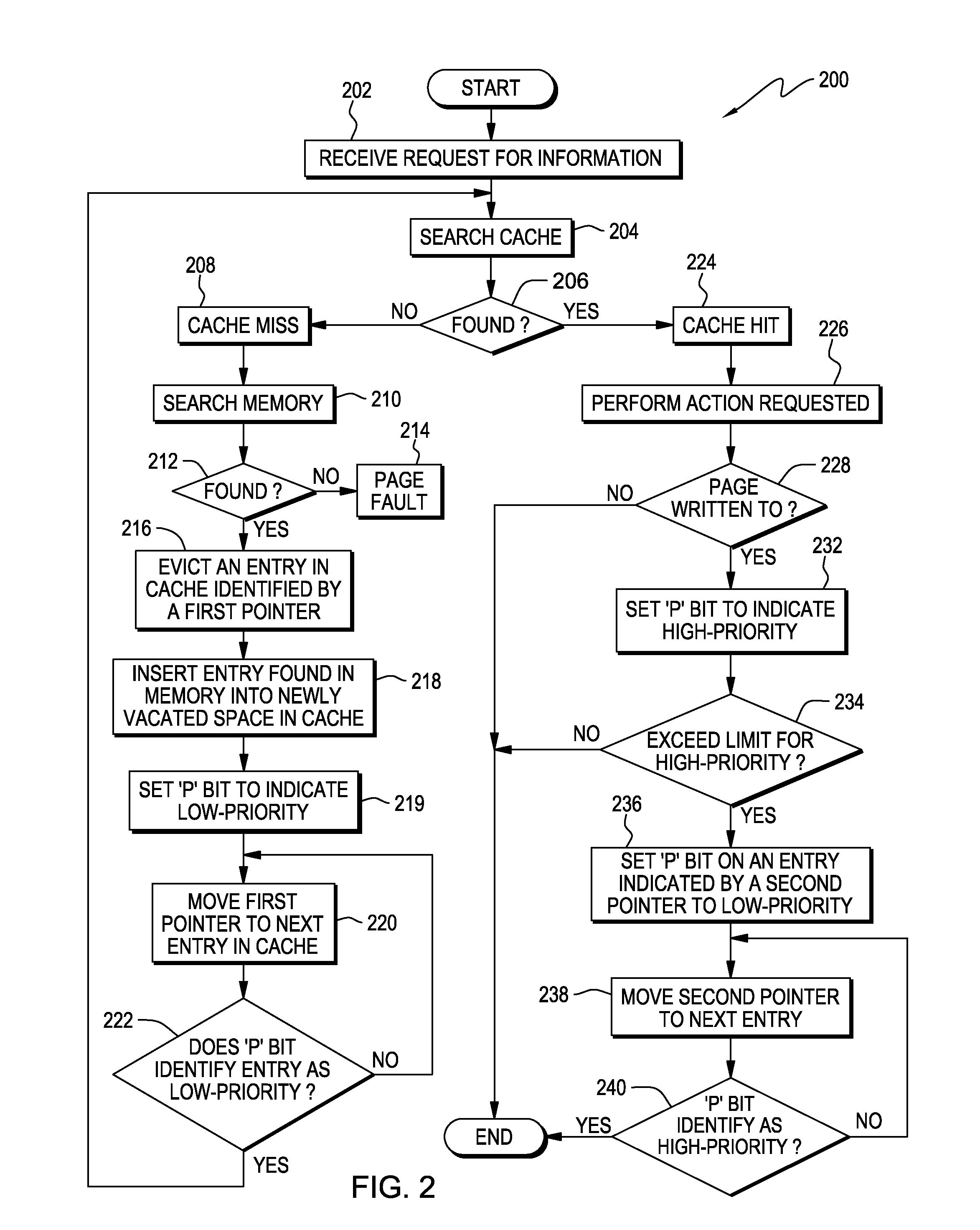Multiple-class priority-based replacement policy for cache memory
a technology of cache memory and priority, applied in the direction of memory adressing/allocation/relocation, instruments, computing, etc., can solve the problems of infeasibility and high cost of lru-type replacement policies
- Summary
- Abstract
- Description
- Claims
- Application Information
AI Technical Summary
Problems solved by technology
Method used
Image
Examples
Embodiment Construction
[0016]As will be appreciated by one skilled in the art, aspects of the present invention may be embodied as a method or system. Accordingly, aspects of the present invention may take the form of an entirely hardware embodiment, an entirely software embodiment (including firmware, resident software, micro-code, etc.) or an embodiment combining software and hardware aspects that may all generally be referred to herein as a “circuit,”“module,” or “system.”
[0017]In the course of developing the invention, the inventors found that for small, highly associative caches like a TLB, to avoid the complexity and overhead of a more optimal replacement policy such as LRU, optimization is traded for the simplicity and low-overhead of a FIFO replacement policy. The inventors also found that with FIFO replacement, any time a program begins streaming through pages, the entire content of a TLB may be replaced. Because history is not incorporated, important pages are not protected and are replaced with...
PUM
 Login to View More
Login to View More Abstract
Description
Claims
Application Information
 Login to View More
Login to View More - R&D
- Intellectual Property
- Life Sciences
- Materials
- Tech Scout
- Unparalleled Data Quality
- Higher Quality Content
- 60% Fewer Hallucinations
Browse by: Latest US Patents, China's latest patents, Technical Efficacy Thesaurus, Application Domain, Technology Topic, Popular Technical Reports.
© 2025 PatSnap. All rights reserved.Legal|Privacy policy|Modern Slavery Act Transparency Statement|Sitemap|About US| Contact US: help@patsnap.com



